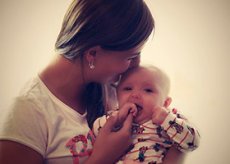Medical expert of the article
New publications
Management of the postpartum period
Last reviewed: 06.07.2025

All iLive content is medically reviewed or fact checked to ensure as much factual accuracy as possible.
We have strict sourcing guidelines and only link to reputable media sites, academic research institutions and, whenever possible, medically peer reviewed studies. Note that the numbers in parentheses ([1], [2], etc.) are clickable links to these studies.
If you feel that any of our content is inaccurate, out-of-date, or otherwise questionable, please select it and press Ctrl + Enter.

Despite the fact that the postpartum period is a physiological condition, it requires serious attention. The health of the mother, the body's resistance to possible infection, the normal course of uterine involution and lactogenesis largely depend on a well-organized hygienic regimen in the postpartum period.
Over the last decades, the experience of obstetric practice has convincingly confirmed the rationality of active management of the normal postpartum period. This means that after 6-8 and maximum 12 hours the mother gets up and takes care of herself. Such active tactics contribute to a significant decrease in the frequency of uterine subinvolution, improved lactation, and almost complete absence of postpartum thrombophlebitis.
The following principles of postpartum management are distinguished:
Ensuring the normal well-being of mother and child
Assessing the mother's condition, measuring and recording body temperature, blood pressure, determining the nature and frequency of the pulse. Pay attention to the mammary glands: determine their shape, possible engorgement, condition of the nipples, presence of cracks on them; -
Constant monitoring of postpartum discharge (lochia) and uterine involution.
Time intervals:
- during the first two hours - every 15 minutes;
- during the third hour - every 30 minutes;
- over the next three hours - every 60 minutes;
- during the rest of the stay in the postnatal ward
- once a day.
The height of the fundus of the uterus above the pubis is measured with a centimeter tape, while the bladder must be emptied. Its size on the first day is 15-16 cm. Decreasing daily by 2 cm, the fundus of the uterus by the 10th day of the normal postpartum period is not determined above the pubis. The uterus is usually painless, mobile, dense upon palpation. Regular emptying of the bladder and intestines promotes active involution of the uterus.
More reliable information about involutional processes in the uterus in the postpartum period is obtained by ultrasound. In this case, the length, width, anteroposterior size of the uterus are determined, the uterine cavity is examined, its size and contents are assessed.
The ultrasound image of the postpartum uterus depends on the method of delivery: performing postpartum gymnastics exercises.
Support for early breastfeeding
At present, the effectiveness of early attachment of a newborn to the mother's breast, that is, in the first 2 hours, has been theoretically proven and confirmed in practice:
- this causes positive emotions in the mother, prevents hypogalactia and promotes better flow of immune components from the mother's blood through the barrier of the mammary gland with milk into the newborn's body;
- skin-to-skin contact and early attachment of the newborn to the breast, round-the-clock joint stay of mother and newborn, the mother's choice of the breastfeeding position that is most comfortable for both her and the baby, which contributes to long-term and successful feeding - this emotional contact gives the mother the opportunity to express her maternal feelings;
- protects the newborn from infections.
Today, a flexible feeding schedule is allowed. This regime means a reasonable number of feedings at certain times and stopping night feedings if the child gets used to it. The intervals between feedings increase as the child's weight increases.
Supporting the mother's sense of self-confidence
Providing the mother with accurate and comprehensive information throughout the postpartum period regarding her condition and the condition of the newborn, and acquiring skills in quality care and observation of the child will increase her sense of self-confidence and also enable her to seek help in a timely manner if necessary.
Providing consultations on family planning and child care after discharge
The discharge of the woman in labor from the hospital is carried out:
- after an objective assessment of the mother's condition: no complaints, stable hemodynamic parameters, no bleeding, no signs of infection. There is no evidence to support the need for routine ultrasound examination of the pelvic organs of women in the postpartum period;
- after the mother has been taught how to care for the child. If there are no deviations from the physiological course of the postpartum period, the mother and the newborn are discharged home on the 3rd day;
- after the mother has been counseled on issues of feeding the newborn, postpartum contraception and the main threatening symptoms of the postpartum period.
Threatening symptoms in women in the postpartum period:
- vaginal bleeding (using 2-3 pads in 30 minutes);
- increase in body temperature;
- difficulty breathing;
- abdominal pain;
- pain in the mammary glands and nipples;
- pain in the perineum;
- purulent (with an unpleasant odor) discharge from the vagina.
Threatening conditions of a child that require assistance
- the baby sucks the breast poorly;
- the child is lethargic or excitable;
- the child has convulsions;
- the child has breathing problems;
- the child has hyperthermia or hypothermia;
- swelling, hyperemia or suppuration of the umbilical wound are determined;
- urinary incontinence, pain (difficulty) when urinating;
- the child is vomiting or has diarrhea.


 [
[